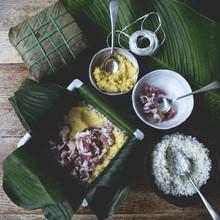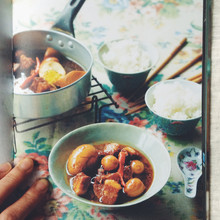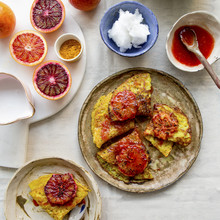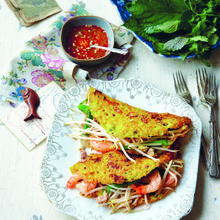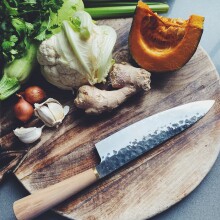I had to take many deep breaths as I was reading “Ru“, a novel by a fellow Vietnamese whose path through history lead her and her family to Quebec and similar to me, to London. Ru is a story of a young girl, turned mother, it is about a life as a refugee and immigrating. The book is brief yet powerful in its very selective sense of wording. Some chapters are no longer than a paragraph but often, I had to put the book down and shake myself out of a trance and a realisation that Kim Thúy is telling my story or that of my mother, my father.. my people.
“Ru” is a memoir, fictional and autobiographical. It is non linear in its chronological order, one moment in the past, another in the present. It is neither driven by plot nor narrative but by a visceral poetry and imagery of war and peace intermingled with the matter of human love between mother and daughter.
I last read such a painful depiction of war in “The Pianist” by Wladyslaw Szpilman but this isn’t a story about the war but a story about what happened after the war:
“As a child, I thought that war and peace were opposites. Yet I lived in peace when Vietnam was in flames and I didn’t experience war until Vietnam laid down its weapons.”
When I was little, I would often eavesdrop my mother who nattered endlessly to her friends whilst I was colouring-in or pretending to be watching the television. She gossiped about her youthful days before I was born (during the war) in her white an áo dài. She was beautiful and was being wooed by handsome men, all she had to do was pick a husband. She reminisced on having fun with her brothers and sisters over hot steamed buns and fried fish. When they craved a certain thing to eat, like a barbecued pork bánh mì that they couldn’t afford, they would order one with little or without fillings and share things between themselves and delight over delicious tastes. The stories were endless but seemed peaceful and happy.
I hardly heard stories of people being blown up and the horrors of war, perhaps they knew my young keen ears were listening after all. When we immigrated to the west as refugees, the story of the boat people after the war was never told. It was all about the Americans, who were defeated by “rice eaters” and the suffering of their own men in Platoon, Full Metal Jacket and Apocalypse Now. Nothing was heard of the millions of Vietnamese people who were not only stripped of their livelihoods, homes, land and possessions but also of food and lived in fear for their lives. Families sent their sons and daughters to escape out to sea, facing death, be it on land or sea, they risked it for freedom. At sea, women and girls were raped by pirates then fed to sharks and many simply died in storms or starvation/ thirst on fishing boats or were captured, denounced and sent to “re-education” camps. On land, everyone had to whisper in fear of a Viet Cong with a gun, who may or may not take your life.
This is what Kim Thúy evokes in Ru – “In Vietnamese it means lullaby; in French, it is a small stream, but also signifies a flow – of tears, blood and money.” She poignantly draws an image of hunched back women who bent over for decades picking rice grains to that of a six year old boy, killed while delivering a message:
“I cried with joy as I took my two sons by the hand, but I cried as well because of the pain of that other Vietnamese mother who witnessed her son’s execution. An hour before his death, that boy was running across the rice paddy with the wind in his hair, to deliver messages from one man to another, from one hand to another, from one hiding place to another, to prepare for the revolution, to do his part for the resistance, but also, sometimes, to help send a simple love note on its way.
That son was running with his childhood in his legs. He couldn’t see the very real risk of being picked up by soldiers of the enemy camp. He was six years old, maybe seven. He couldn’t read yet. All he knew was how to hold tightly in his hands the scrap of paper he’d been given. Once he was captured, though, standing in the midst of rifles pointed at him, he no longer remembered where he was running to, or the name of the person the note was addressed to, or his precise starting point. Panic muted him. Soldiers silenced him. His frail body collapsed on the ground and the soldiers left, chewing their gum. His mother ran across the rice paddy where traces of her son’s footprints were still fresh. In spite of the sound of the bullet that had torn the space open, the landscape stayed the same. The young rice shoots continued to be cradled by the wind, imperturbable in the face of the brutality of those oversized loves, of the pains too muted for tears to flow, for cries to escape from that mother who gathered up in her old mat the body of her son, half buried int he mud.”






I met Kim Thúy when she came to London on a book tour and I was invited to have dinner with her at the General Agent of Quebec’s residence in Holland Park. The dinner was imaginative in flavours and really superb and the General and his wife hosted a lovely evening where I got to ask Kim Thúy many questions.
Like myself, Kim Thúy has had to reinvent herself in many ways before she has devoted all her time to writing. She was a seamstress, translator, lawyer and a cook/ restaurant owner. Kim said she only ever cooked one dish and people would come to her restaurant and eat that. She laughed that she would never call herself a “chef”. “I am just a cook,” and she giggled all evening. No matter how being in the west “had given confidence to my voice, determination to my actions, precision to my desires, speed to my gait and strength to my gaze…” Kim had a heart of a Vietnamese lady even though she says in her book, “I no longer had the right to declare I was a Vietnamese because I no longer had their fragility, their uncertainty, their fears.” She laughs and jokes and I relate to her as “Chi”, meaning, sister.
She tells me how her book is not yet accepted in Vietnam as this story of war during times of peace is not really talked about. “Children nowadays do not know why so many people had fled and why they come back to visit.”
She says that if she had written her actual story, there would be just three pages. “Its not just about me”, she says, “its about many boat people who had to leave the country.” It took her a year to write this book and she weaved stories she heard together to make one.
She says it means to a lot to her when Vietnamese people who have immigrated relate to her book. I feel that she gives us a voice, rarely people are aware of what happened to all those millions who fled and were lost at sea.
“Some (Vietnamese) people criticise it for not having a stronger side against the Communist,” she chatted, “I wanted it to be more about our plight.”
It could easily take 2 and a half hours to read “Ru” entirely but it does seem like it has left pockets of insight in my heart and mind, staying with me, resonating and almost like when you see a thing of beauty or a thing of pain and you just want to cry out loud. It is as if she has given the reader a third dimension, by not saying everything, not placing too many words so that each person could possibly read, see and feel this book in many different ways.
Perhaps this story is very close to my heart and what my family went through but its got to be one of my most beautifully written books. Highly recommended!
Ru’s going to be a BBC Radio 4 Book at Bedtime from Monday 25 June 2012. It’ll be read by the French-Cambodian actress Elodie Yung. There’s no preview online for it yet, but this is the homepage for Book at Bedtime: http://www.bbc.co.uk/programmes/b006qtlx
Kim Thúy is currently working on her next novel.
Thank you to Anna-Marie and Andrew Franklin at Profile Books for the invitation.
Thank you to The Agent General Quebec – Pierre Boulanger and his wife for hosting such a wonderful dinner.



